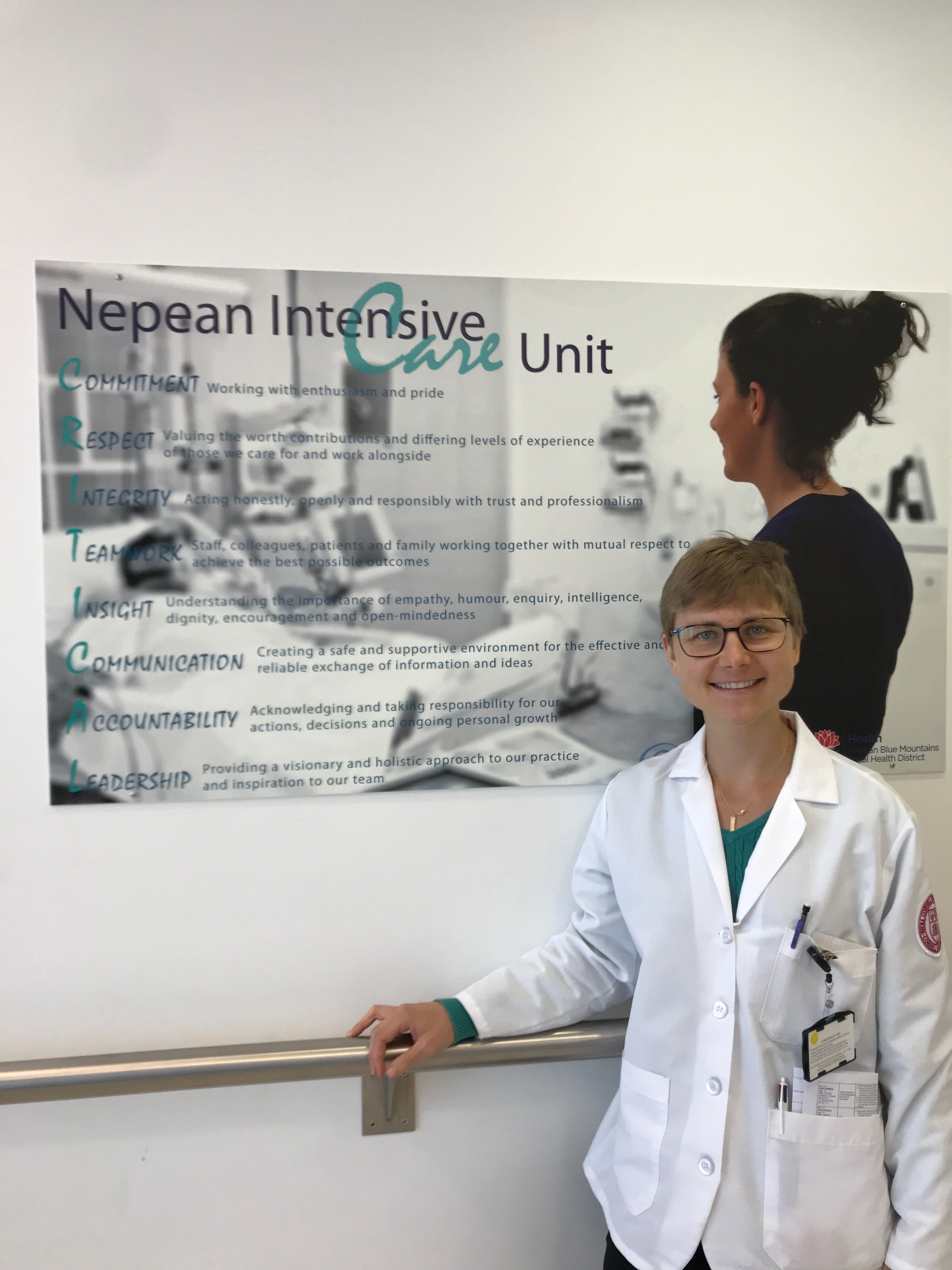
Sydney, Australia
Concord Dermatology & Nepean ICU
February 5th – March 30th, 2018
I spent four weeks rotating through the dermatology clinic at Concord hospital. I saw a variety skin conditions ranging from common to extremely rare. The training I received was important because regardless of what field of medicine I pursues every time I see a patient there is an opportunity to observe something about their skin. I had felt that my exposure to dermatology in medical school before this experience had been lacking. Like many fields in medicine, dermatology is best learned through observing lesions over and over again so that you can build confidence in making a clinical decision. My experience at Concord was a good foundation to start building that confidence.
It was interesting to see the cutaneous manifestations of many diseases and humbling to witness how debilitating or chronically uncomfortable many skin conditions can be. There seems to be a very limited number of medications at the disposal of dermatologists and especially when conditions are severe there is a great deal of trial and error. I assisted in many punch biopsies and small procedures, which I anticipate doing soon as an intern. In the mornings we saw hospital consults. This was an opportunity to learn about the more serve and sometimes life threatening skin conditions.
I spent most of my time with the Registrar (a trainee who will be a Dermatologist) and Resident (a trainee who has taken a job in dermatology to explore the field). The Resident and myself would see patients and present to the registrar. Once a week, Australian medical students came and there was teaching by a professor (prestigious attending).
Most patients paid through the universal health program Medicare. There were however a subset of patients who normally paid privately but had come to this clinic because the specialist they went to privately was working that day.
The Concord hospital is about a 40-minute train ride into central Sydney and near the Olympic Park. I lived at the hospital accommodations located in the hospital. The hospital is currently undergoing renovations and the floor that I lived on will be turned into offices. As such, I am not sure where students might stay in the future. The hospital will benefit greatly from an update as many of the buildings are worn.
I spent the following four weeks rotating through the Nepean ICU. This was a tremendous learning opportunity. Unlike at Concord, I was with other medical students on a daily basis. Most of these students were Australian, and they were eager to learn. In anticipation of my intern year, I had additional motivation to fill in knowledge gaps particularly surrounding differential diagnosis and management. While medical students have less patient responsibility in Australia then in America, the learning is superb. The physical exam, plan, and note is done with the entire team including the attending. This means that the pace of rounds is much slower, but there is much more daily observation and feedback especially from the attending. Unlike in the American system where questions tend to be directed at the lowest trainee on the totem poll, at the Nepean ICU, questions tend to be directed to the most senior trainee and I found myself soaking up there pearls of knowledge. The trainees were always enthusiastic to teach; they welcomed all my questions and had time to answer them.
10% of patients admitted to the Nepean ICU die and the percentage is even higher if you subtract out the post operation patients. A significant number of patients have obesity, drug addiction or low socioeconomic status. Tragic stories and urgent family meetings were commonplace, and I sat in on many end of life conversations. I felt as though the culture surrounding death was more accepting in Australia than in America. However, it was clear that many attendings felt that the trend was toward making excessive interventions.
There were sit down rounds during which both sides of the ICU came together twice a day. Each week there was a Tuesday teaching conference by a more senior trainee or specialist and a Thursday conference at which medical students such as myself presented. I was particularly proud of my presentation on acute pulmonary edema. In the afternoons, there were always procedures to observe along with family meetings and multidisciplinary meetings.
The Nepean Hospital is located close to the base of Blue Mountains. The accommodation is across from the hospital; there is no air conditioning, which can be a challenge during the summer months. However, the price cannot be beat and it is an opportunity to live with other abroad medical students. The train station is close by and can be used to access the blue mountain attractions or central Sydney - both are approximately 1.5 hours in opposite directions. There is a gym at the Western Sydney University, and a grocery store can be challenging to walk to if it is very hot but there is also a shopping centre with a grocery store and good restaurants about 10 minutes away by train. Shops close early so it is a good idea to plan ahead.
My rotations in Australia exposed me to a different approach to medical education, universal health care and deepened my skills and knowledge as I prepared for residency. I am grateful to those who provided the funding to make this life-changing experience possible.

